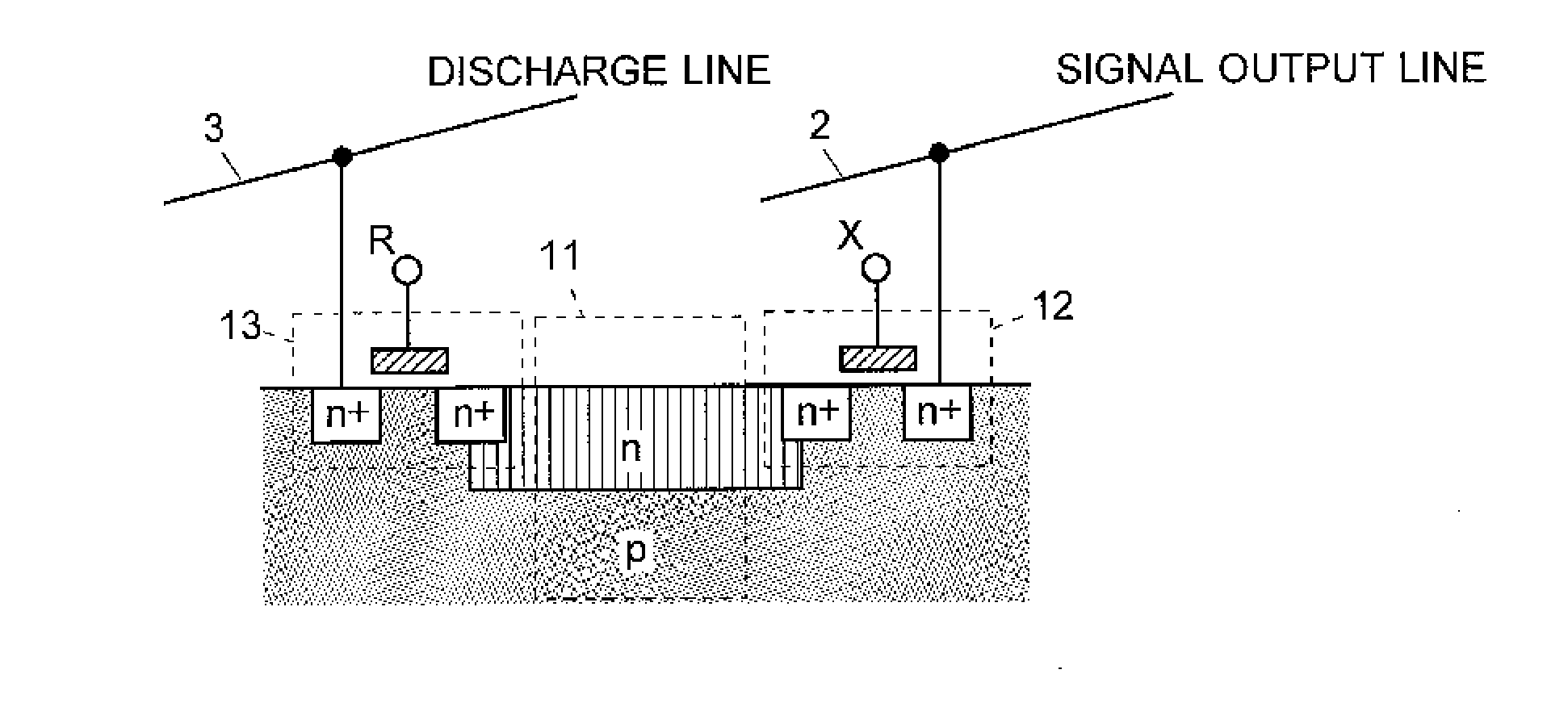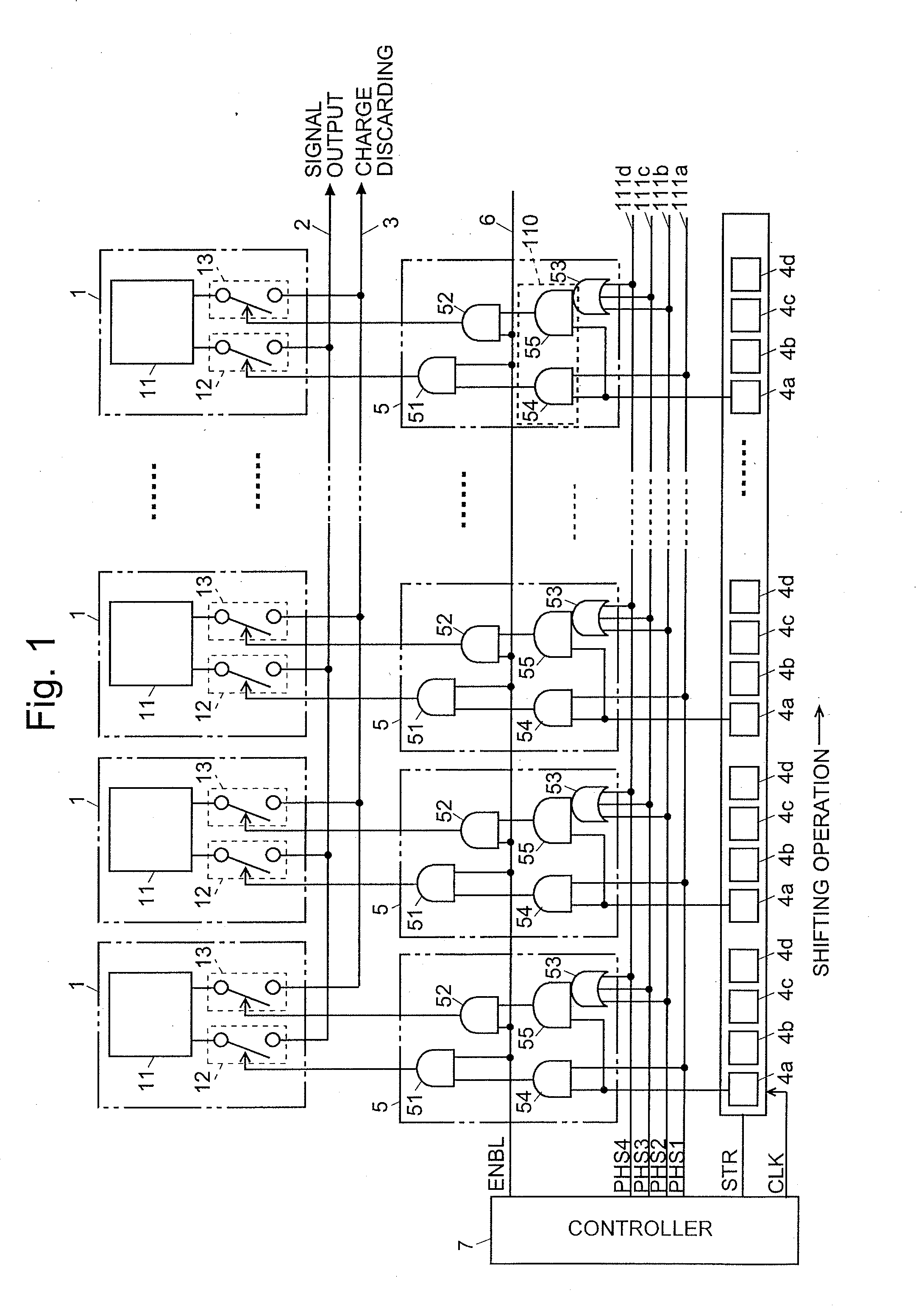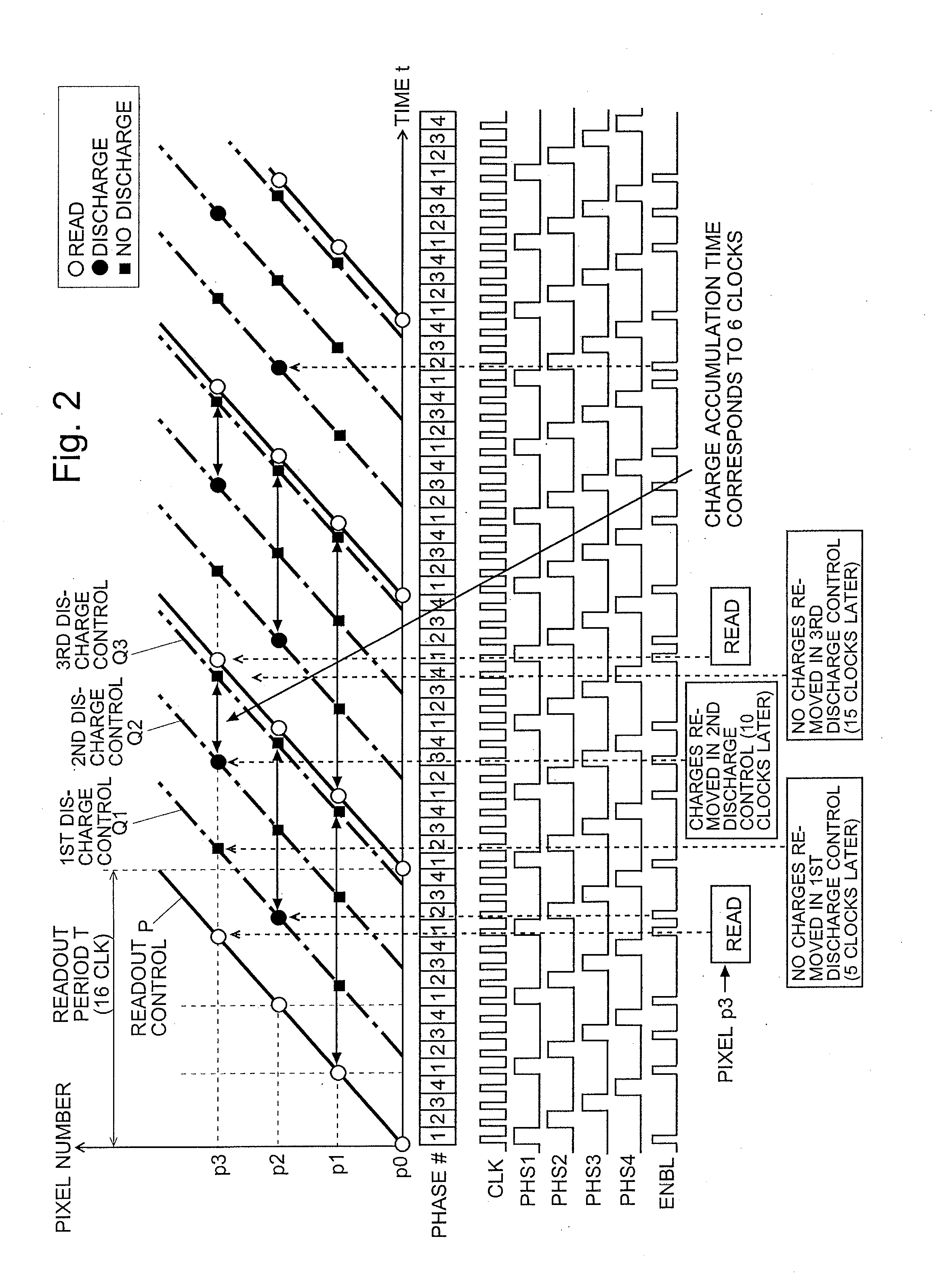Linear image sensor and driving method therefor
a technology of image sensor and driving method, which is applied in the field of linear image sensor, can solve the problems of insufficient signal sn ratio, inability to obtain the correct value of signal, and difficulty in operation, so as to shorten the charge accumulation time, high sn ratio, and long charge accumulation time
- Summary
- Abstract
- Description
- Claims
- Application Information
AI Technical Summary
Benefits of technology
Problems solved by technology
Method used
Image
Examples
first embodiment
[0068]An embodiment (first embodiment) of the linear image sensor and its driving method according to the present invention is hereinafter described with reference to the attached drawings.
[0069]The linear image sensor of the first embodiment (and that of the second embodiment, which will be described later) is suitable as a detector for a spectrophotometer as shown in FIG. 4. Measurement light emitted from the bright point in a light source 100 having a specific emission spectrum (e.g. a deuterium lamp, tungsten lamp or xenon lamp) is focused by a lens 101 and cast into a sample cell 103 made of quartz glass or a similar transparent material with a liquid sample 104 held inside. After passing through the liquid sample 104, the transmitted light is focused by a lens 105 and falls onto a light-dispersing device 107 (e.g. a diffraction grating) through a slit 106. The transmitted light is dispersed into wavelengths in a one-dimensional direction by the light-dispersing device 107. The...
second embodiment
[0091]A linear image sensor and its driving method according to the second embodiment different from the first embodiment is hereinafter described using FIGS. 5 and 6. FIG. 5 is a configuration diagram showing the main components of the linear image sensor according to the second embodiment, and FIG. 6 is a model diagram illustrating the driving method for controlling the charge accumulation time in the linear image sensor of the second embodiment. The components identical or corresponding to those of the first embodiment are denoted by the same numerals.
[0092]The linear image sensor of the second embodiment is completely identical to that of the first embodiment in terms of the configuration of each individual pixel 1. A difference exists in that the number of shift registers is increased in exchange for the decreased number of stages of each shift register. It should be noted that the second embodiment is configured to realize only one choice of the charge accumulation time that i...
PUM
 Login to View More
Login to View More Abstract
Description
Claims
Application Information
 Login to View More
Login to View More - R&D
- Intellectual Property
- Life Sciences
- Materials
- Tech Scout
- Unparalleled Data Quality
- Higher Quality Content
- 60% Fewer Hallucinations
Browse by: Latest US Patents, China's latest patents, Technical Efficacy Thesaurus, Application Domain, Technology Topic, Popular Technical Reports.
© 2025 PatSnap. All rights reserved.Legal|Privacy policy|Modern Slavery Act Transparency Statement|Sitemap|About US| Contact US: help@patsnap.com



